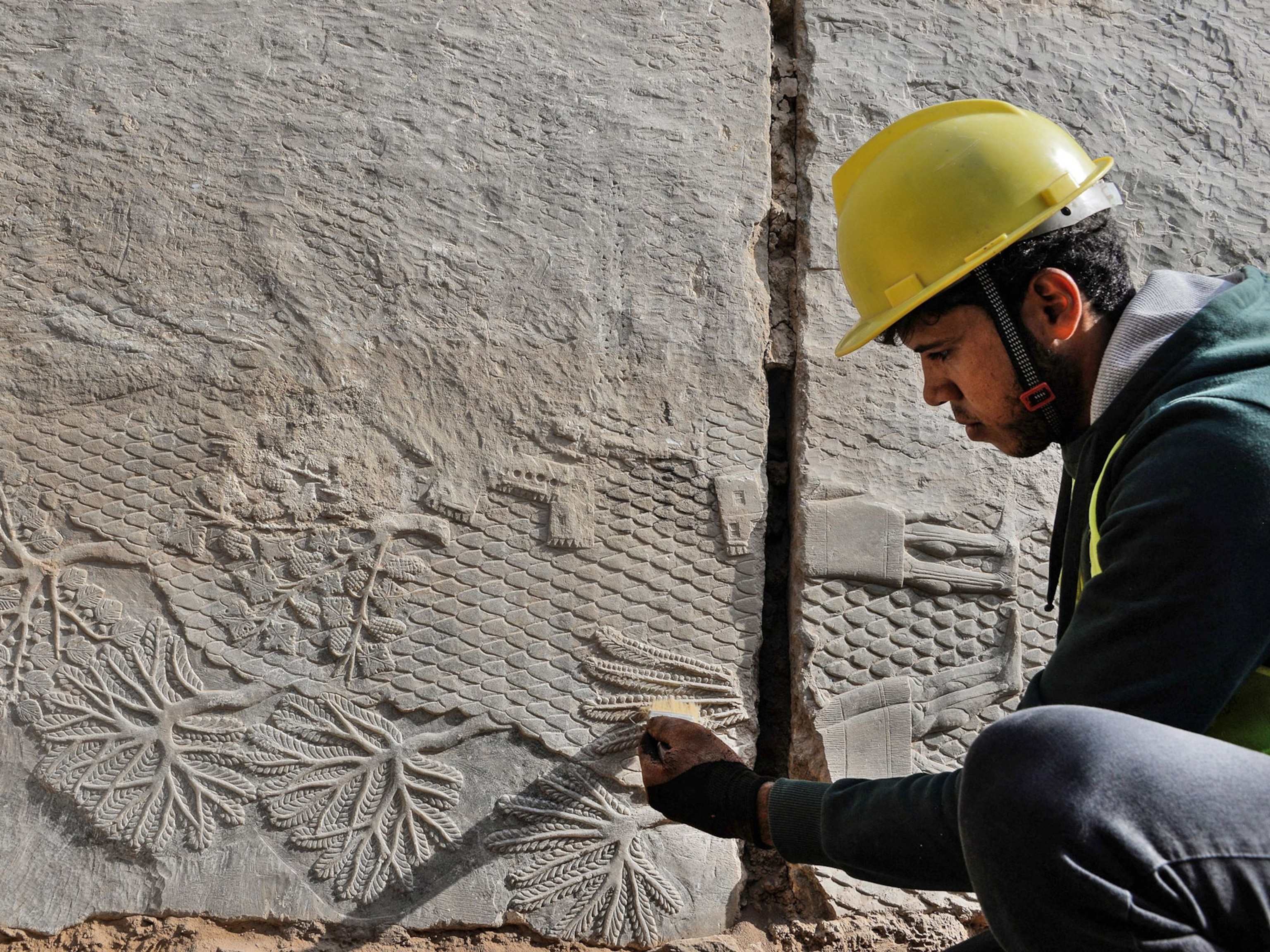Helmets with horns. Massive ships. Brutal warfare. When it comes to the Vikings—Scandinavian seafarers known for their far-flung raids on other people—stereotypes and misconceptions abound. Who were these nautical explorers, really, and should they even be called Vikings?
That’s a controversial concept. The word was initially used to describe not a people, but rather the activity of exploring, piracy, or raiding. After being revived in English in the 19th century, the term “Viking” came to represent the Scandinavian seafarers who ventured beyond their borders to explore, raid, and ultimately settle between about 790 and 1100 A.D.
Those raiding journeys were expansive and often violent. Beginning in the 790s, Scandinavian pirates sailed south and attacked largely defenseless monasteries in England, Scotland, and Ireland. It heralded the beginning of a new era of Swedish, Norse, and Danish exploration. The reasons behind the incursions are still debated by historians, but may have related to a lack of marriageable women, a desire for slave labor, or a desire to expand trade networks.
International raiders
Starting in 865, the Vikings began a massive invasion of England. Known as the “Great Heathen Army,” the pagan soldiers attacked and took over three of England's four Anglo-Saxon kingdoms. Though referred to in military terms at the time, the raiders also included traders, women, and children. The remaining unconquered kingdom, Wessex, escaped Viking rule, but engaged in years of fighting. Eventually the Danelaw, the lands taken over by Danish Vikings, extended across the entire northeastern portion of England. (Norwegians settled in Scotland.)
England wasn’t the only place where the Vikings made themselves known: they sailed as far south as North Africa, as far west as Canada, and into the Middle East, Russia, France, and Spain (see a map). Along the way, Vikings settled, intermixed with the people they conquered, and influenced everything from language to warfare.
Between the 9th and 11th centuries A.D., Vikings conducted more raids. But the Second Viking Age, as it was known, involved a new form of power: money. Vikings demanded payment, later known as “danegeld,” in exchange for not conducting raids and maintaining peace. England’s taxation system was founded on this method of extortion.
Waning influence
By about 1100, Viking dominance diminished. Political power consolidated as scattered chiefdoms gave way to Scandinavian kingdoms and legal institutions. Vikings' targets had invested in fortifications and learned to defend themselves. The Battle of Hastings brought the end of Viking rule in England in 1066, and the adoption of Christianity within Scandinavia slowed the raids.
Though popular culture continues to depict Vikings as wearing horned helmets (they didn’t) and drinking from skulls (also a myth), their peaceful trading and cultural sharing belies the violent legend. The Vikings’ cultural power and contributions to the communities in which they settled were just as potent as their ability to sail and pillage.
Related Topics
You May Also Like
Go Further
Animals
- This ‘saber-toothed’ salmon wasn’t quite what we thoughtThis ‘saber-toothed’ salmon wasn’t quite what we thought
- Why this rhino-zebra friendship makes perfect senseWhy this rhino-zebra friendship makes perfect sense
- When did bioluminescence evolve? It’s older than we thought.When did bioluminescence evolve? It’s older than we thought.
- Soy, skim … spider. Are any of these technically milk?Soy, skim … spider. Are any of these technically milk?
- This pristine piece of the Amazon shows nature’s resilienceThis pristine piece of the Amazon shows nature’s resilience
Environment
- The world’s historic sites face climate change. Can Petra lead the way?The world’s historic sites face climate change. Can Petra lead the way?
- This pristine piece of the Amazon shows nature’s resilienceThis pristine piece of the Amazon shows nature’s resilience
- Listen to 30 years of climate change transformed into haunting musicListen to 30 years of climate change transformed into haunting music
- This ancient society tried to stop El Niño—with child sacrificeThis ancient society tried to stop El Niño—with child sacrifice
History & Culture
- Meet the original members of the tortured poets departmentMeet the original members of the tortured poets department
- Séances at the White House? Why these first ladies turned to the occultSéances at the White House? Why these first ladies turned to the occult
- Gambling is everywhere now. When is that a problem?Gambling is everywhere now. When is that a problem?
- Beauty is pain—at least it was in 17th-century SpainBeauty is pain—at least it was in 17th-century Spain
Science
- Here's how astronomers found one of the rarest phenomenons in spaceHere's how astronomers found one of the rarest phenomenons in space
- Not an extrovert or introvert? There’s a word for that.Not an extrovert or introvert? There’s a word for that.
- NASA has a plan to clean up space junk—but is going green enough?NASA has a plan to clean up space junk—but is going green enough?
- Soy, skim … spider. Are any of these technically milk?Soy, skim … spider. Are any of these technically milk?
Travel
- Could Mexico's Chepe Express be the ultimate slow rail adventure?Could Mexico's Chepe Express be the ultimate slow rail adventure?
- What it's like to hike the Camino del Mayab in MexicoWhat it's like to hike the Camino del Mayab in Mexico









